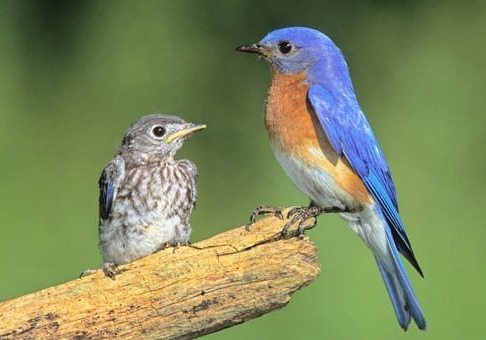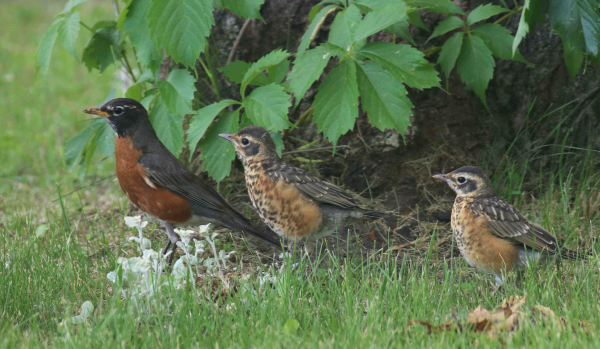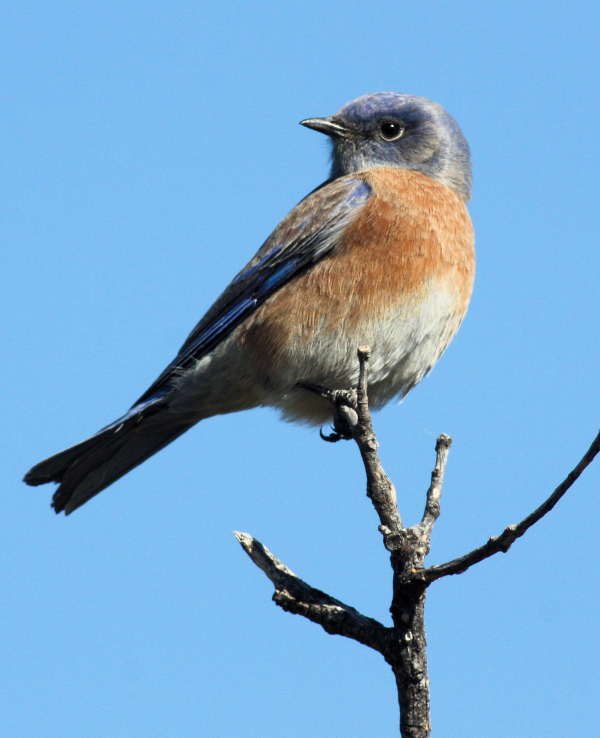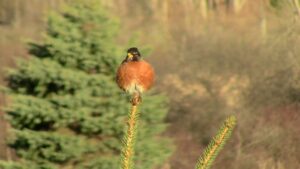Fledging Time


It’s an exciting time as the nesting season becomes more obvious with each passing day, and you may already be seeing some new fledglings that are leaving their nests. As fledglings appear, witnessing the successes of the nesting season is a wonderful experience and a fulfilling part of of providing nesting habitat in our yard, along with foods and fresh water for adults and fledglings. It’s a time we can all learn more about the behavior of birds when they venture beyond their nest, which is a time that’s not often described.
This week we’ve been watching the progress of a particular fledgling American Robin, that on first encounter looked like it was so young that it had fallen out of the nest. But it could fly short spurts to collect food from an attending adult. By the next day, it left its ground-based hangouts for low branches in nearby trees – obviously moving around and flying better. By day 3, it was beginning to stand in a more upright posture, which made it look larger and more adult-like in stature; and by day 4 the fledgling was flying especially strong and reacting immediately to human movements in the area.
And that’s what’s really fun about this time of the year: Everyone enjoys seeing new fledglings such as bluebirds, robins, cardinals, chickadees, screech owls, and others. Part of the learning process for birders is that by observing young birds when they leave the nest, we find out that fledglings are not on their own. The next step is really just a continuation of birds’ development known as the “post-fledging period,” which takes place after new fledglings leave the nest and continue to be protected and fed by adults.
The Post-fledging Period
During this interesting period,
fledglings are just learning what to eat, where to find food, and what constitutes danger – not to mention that they are learning to fly! This fledgling learning period is paramount to the survival of young birds, so have faith that when you find a young bird, one or both of its attentive parents are nearby and will soon be bringing food to the fledgling. When we encounter young birds, especially new fledglings, it’s important to appreciate that these young birds do not need our help. Please encourage everyone, including children, not to disturb young birds that are appearing in our yards, neighborhoods, local parks, and rural areas – let nature persevere. One thing you can do though, is to keep cats in the house, and gently encourage neighbors to do the same.
Even if it seems like a young bird can’t fly yet, don’t press it to fly; and never fear, if it’s not a top-notch flier already, it will be flying quite well in a few hours, or at least shortly. At first, all a fledgling really needs to do is to get off the ground to perch on a branch. If you watch though, it’s amazing to see how quickly young songbirds learn to fly and gain the strength to fly ever-farther. In the meantime a young bird, or a couple of them from the same brood, will follow a parent to beg for food and learn how and where to find food in the process.
Some young birds even leave the nest a few days or even weeks before they can fly – young owls for example. Nestling owls usually leave the nest days or even weeks before they can fly, perching near the nest and walking along adjacent branches. This is often true for young hawks too; these birds are referred to as “branchers,” and this behavior may continue for days or weeks before they make their first simple attempts at flying. Even if young birds get blown out of their nest, the adults continue to protect and feed them through the pre-fledging period, and they often climb into a tree as soon as possible.
Except in an extreme case, we should let nature take its course, and watch the post-fledging period unfold and progress as observers. It’s always best not to make judgements without having all the information about the status of fledglings and hatchlings we see. After all, precocial hatchlings leave the nest soon after hatching, without being able to fly. Examples include young Killdeer and other shorebirds, along with ducklings, goslings, and young pheasants, but these birds tend to stay close to very attentive parents, and they tend to reside in rural areas where people are less apt to find them.
Overall, the post-fledging period may last a few weeks among smaller birds including some songbirds; but it may last for months for some larger birds such as hawks, owls, ducks, geese, cranes, eagles, and others. Always let birds do what they do best, and most of all, enjoy observing young birds during the post-fledging period, including the interactions between adult and fledgling birds, which is an especially interesting.
Share your backyard birding experiences and photos at editorstbw2@gmail.com






